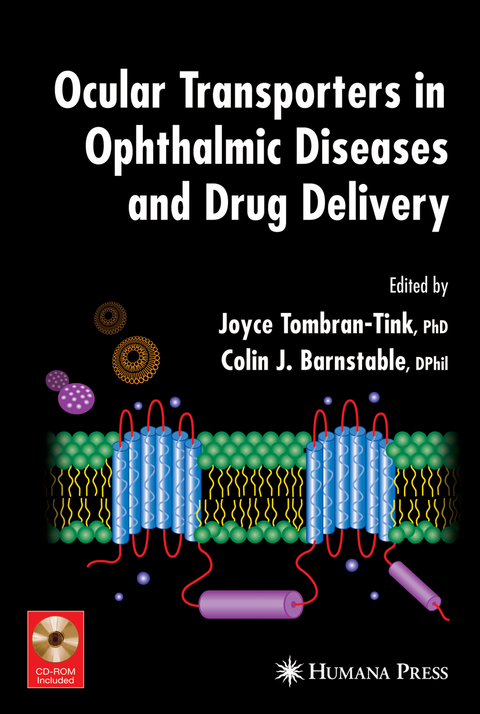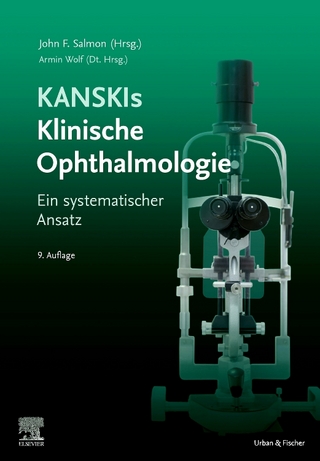
Ocular Transporters in Ophthalmic Diseases and Drug Delivery
Humana Press Inc. (Verlag)
978-1-62703-865-2 (ISBN)
Colin J. Barnstable, D.Phil., is Professor and Chair, Department of Neural and Behavioral Sciences Director, Penn State Hershey Neuroscience Research Institute and Co-Director, Penn State Neuroscience Institute Joyce Tombran-Tink, PhD, Department of Neural and Behavioral Sciences, Penn State Hershey Neuroscience Research Institute and Co-Director, Penn State Neuroscience Institute
Transport in the Anterior Segment.- Aquaporins and Water Transport in the Cornea.- Roles of Corneal Epithelial Ion Transport Mechanisms in Mediating Responses to Cytokines and Osmotic Stress.- Vitamin C Transport, Delivery, and Function in the Anterior Segment of the Eye.- Transporters of the Ciliary Epithelium.- Mechanisms of Aqueous Humor Formation.- Lens Transporters.- Membrane Transporters.- Lens Na+, K+-ATPase.- Transport Across the Blood–Retinal Barrier.- Pathophysiology of Pericyte-containing Retinal Microvessels.- Molecular Mechanisms of the Inner Blood-Retinal Barrier Transporters.- Transport Across the Retinal Pigment Epithelium.- Regulation of Transport in the RPE.- Glucose Transporters in Retinal Pigment Epithelium Development.- Ca2+ Channels in the Retinal Pigment Epithelium.- Taurine Transport Pathways in the Outer Retina in Relation to Aging and Disease.- P-Glycoprotein Expression and Function in the Retinal Pigment Epithelium.- Transporters in the Retina.- The Retinal Rod NCKX1 and Cone/Ganglion Cell NCKX2 Na+/Ca2+-K+ Exchangers.- Excitatory Amino Acid Transporters in the Retina.- Localization and Function of Gamma Aminobutyric Acid Transporter 1 in the Retina.- Genetic Variants of Ocular Transporters.- Biochemical Defects Associated with Genetic Mutations in the Retina-Specific ABC Transporter, ABCR, and Macular Degenerative Diseases.- Glutamate Transporters and Retinal Disease and Regulation.- Glutamate Transport in Retinal Glial Cells during Diabetes.- Ocular Drug Delivery.- The Emerging Significance of Drug Transporters and Metabolizing Enzymes to Ophthalmic Drug Design.- Barriers in Ocular Drug Delivery.- Ophthalmic Applications of Nanotechnology.- Vitamin C Transporters in the Retina.- The Plasma Membrane Transporters and Channels of CornealEndothelium.
From the reviews:
“The ophthalmic structures and tissues present a series of mechanisms necessary to homeostasis maintenance, in order to enable and support the vision function. … this book is indicated for physicians, pharmacologists, pharmacotechnicians, and investigators who wish to understand and study the complex processes of transportation and homeostasis of ocular globe, as well as to develop and formulate eye drops or apply therapies in the ophthalmology area.” (Vladi Olga Consiglieri, Brazilian Journal of Pharmaceutical Sciences, 2009)
| Erscheint lt. Verlag | 29.11.2014 |
|---|---|
| Reihe/Serie | Ophthalmology Research |
| Zusatzinfo | XVIII, 467 p. |
| Verlagsort | Totowa, NJ |
| Sprache | englisch |
| Maße | 178 x 254 mm |
| Themenwelt | Medizin / Pharmazie ► Medizinische Fachgebiete ► Augenheilkunde |
| Medizin / Pharmazie ► Medizinische Fachgebiete ► Neurologie | |
| Medizin / Pharmazie ► Studium | |
| Naturwissenschaften ► Biologie ► Genetik / Molekularbiologie | |
| Naturwissenschaften ► Biologie ► Zellbiologie | |
| ISBN-10 | 1-62703-865-5 / 1627038655 |
| ISBN-13 | 978-1-62703-865-2 / 9781627038652 |
| Zustand | Neuware |
| Haben Sie eine Frage zum Produkt? |
aus dem Bereich


